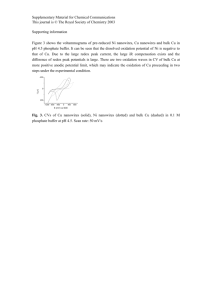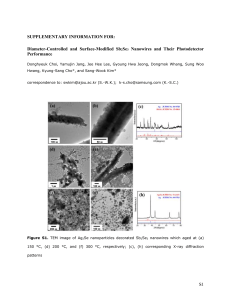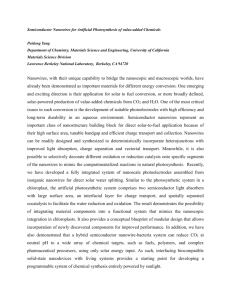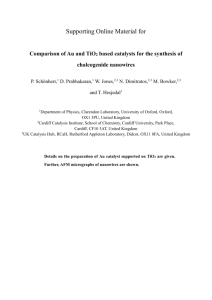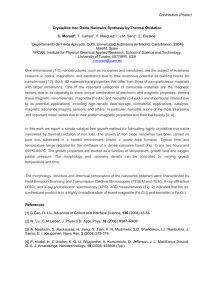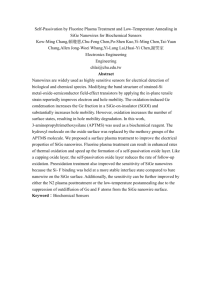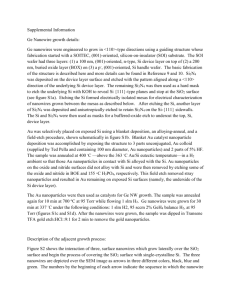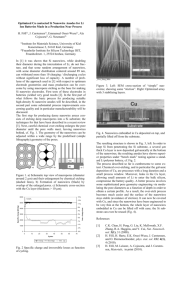The list of changes - Springer Static Content Server
advertisement
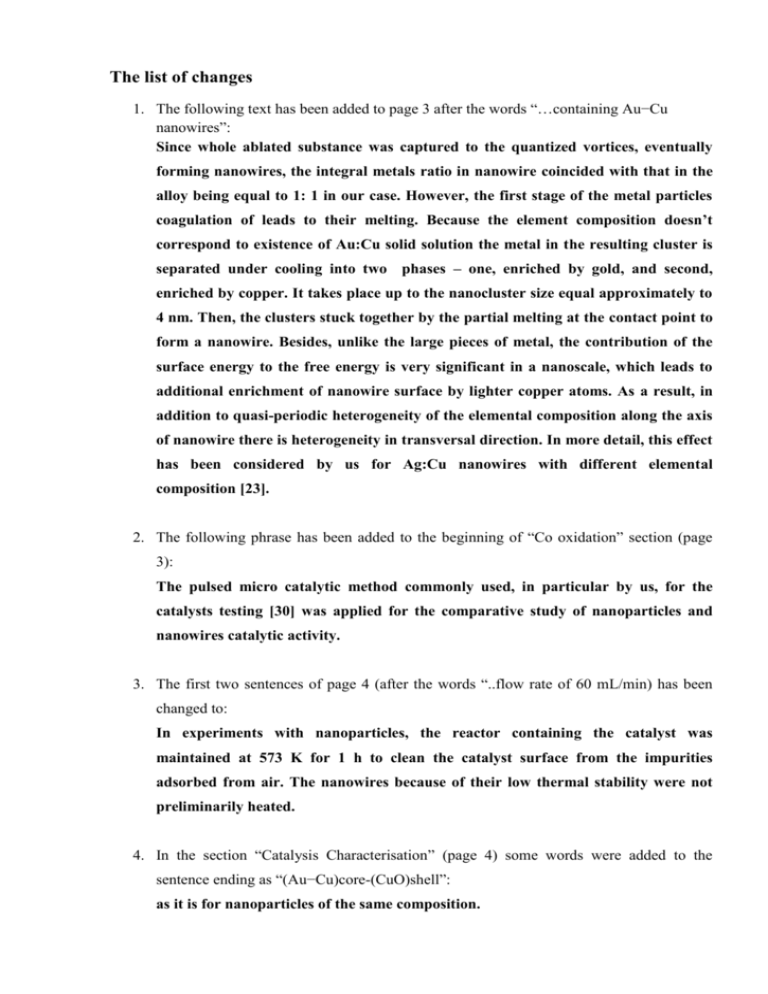
The list of changes 1. The following text has been added to page 3 after the words “…containing Au−Cu nanowires”: Since whole ablated substance was captured to the quantized vortices, eventually forming nanowires, the integral metals ratio in nanowire coincided with that in the alloy being equal to 1: 1 in our case. However, the first stage of the metal particles coagulation of leads to their melting. Because the element composition doesn’t correspond to existence of Au:Cu solid solution the metal in the resulting cluster is separated under cooling into two phases – one, enriched by gold, and second, enriched by copper. It takes place up to the nanocluster size equal approximately to 4 nm. Then, the clusters stuck together by the partial melting at the contact point to form a nanowire. Besides, unlike the large pieces of metal, the contribution of the surface energy to the free energy is very significant in a nanoscale, which leads to additional enrichment of nanowire surface by lighter copper atoms. As a result, in addition to quasi-periodic heterogeneity of the elemental composition along the axis of nanowire there is heterogeneity in transversal direction. In more detail, this effect has been considered by us for Ag:Cu nanowires with different elemental composition [23]. 2. The following phrase has been added to the beginning of “Co oxidation” section (page 3): The pulsed micro catalytic method commonly used, in particular by us, for the catalysts testing [30] was applied for the comparative study of nanoparticles and nanowires catalytic activity. 3. The first two sentences of page 4 (after the words “..flow rate of 60 mL/min) has been changed to: In experiments with nanoparticles, the reactor containing the catalyst was maintained at 573 K for 1 h to clean the catalyst surface from the impurities adsorbed from air. The nanowires because of their low thermal stability were not preliminarily heated. 4. In the section “Catalysis Characterisation” (page 4) some words were added to the sentence ending as “(Au−Cu)core-(CuO)shell”: as it is for nanoparticles of the same composition. 5. The last sentence of Conclusion (page 6) was changed to: The possible problem solution is to use the more stable nanowebs made of more refractory metals, e.g., palladium, platinum, and niobium. Subsequently it is planned to study their catalytic activity in nearest future. 6. The next suggestion has been added to the end of Conclusion (page 6): However, there is another possibility. It is shown recently [38] that by using ironcontaining platinum nanowires deposited on TiO2 as a catalyst for the reaction of CO oxidation by air the complete 100% conversion is achieved already at room temperature. In combination with the results of [39] where 100% conversion at room temperature for the same reaction has been achieved by using Au nanoparticles on γ-Fe2O3 support as a catalyst, this indicates that for the oxidation of CO by air the successful catalysis by gold nanoweb can be carried out just at room temperature, when the gold nanowires are quite stable against their decay into a chain of nanoclusters. This means that in reaction of CO oxidation by air catalyzed by nanowires the temperature of complete conversion may be so low that the nanowebs of most metals would be stable for a long time. 7. Referenses 38 and 39 were added to the list of References: 38. Zhu H, Wu Z, Su D, Veith GM, Lu H, Zhang P, Chai S-H, Dai S (2015) Constructing Hierarchical Interfaces: TiO2-Supported PtFe–FeOx Nanowires for Room Temperature CO Oxidation. J Am Chem Soc 137:10156–10159 39. Akita T, Maeda Y, Kohyama M (2015) Low-temperature CO oxidation properties and TEM/STEM observation of Au/γ-Fe2O3 catalysts. J Catal 324:127– 132
